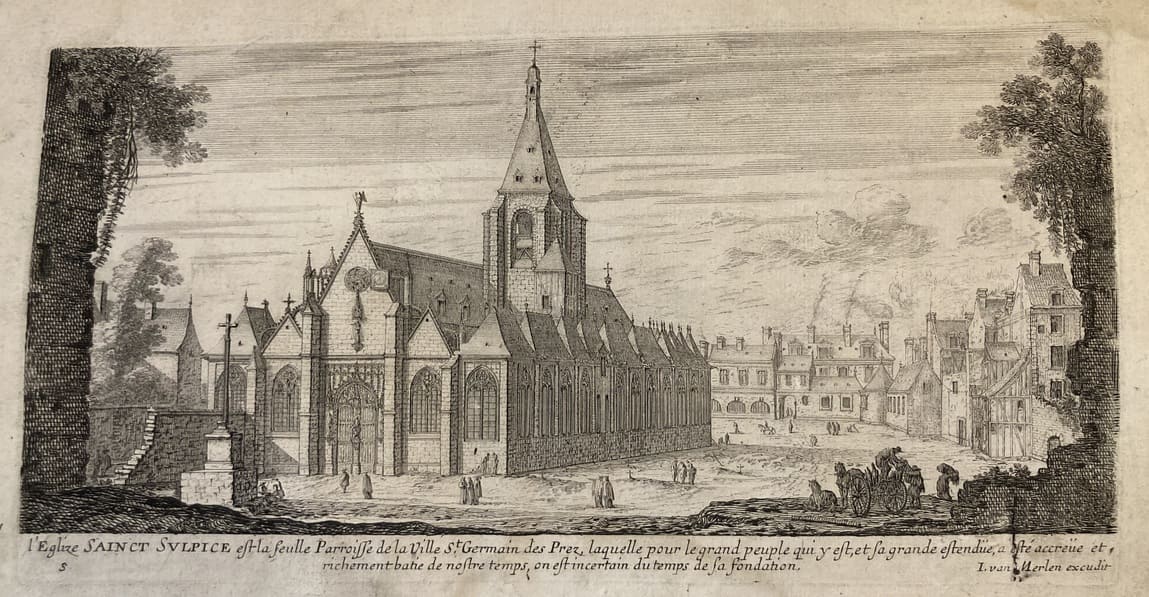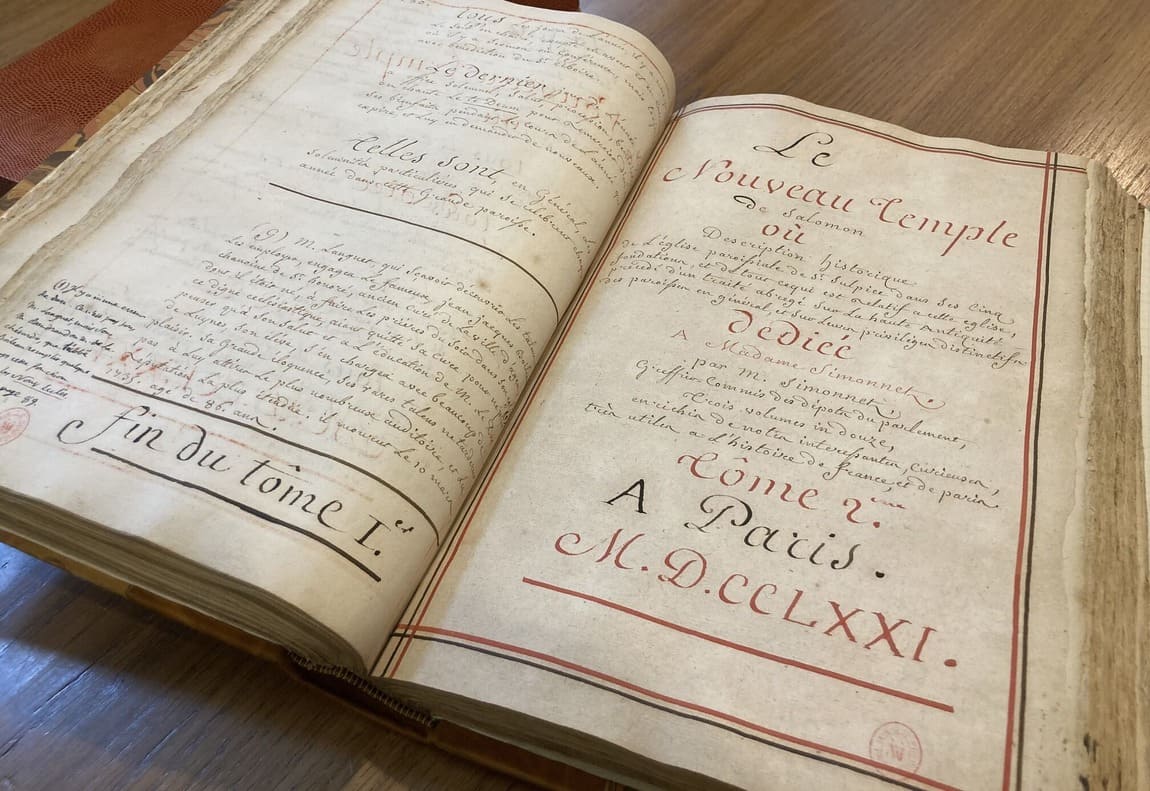The New Temple of Solomon or An Historical Description of the Parish Church of St Sulpice in Its Five Foundations, Archives of Saint Sulpice – Paris, ms 98, Paris : 1771, 614 p.
Two major sources for the medieval and modern history of the parish of Saint Sulpice
The new Temple of Solomon or An Historical Description of the Parish Church of St Sulpice in Its Five Foundations is the title of manuscript no. 98 in the Archives of Saint Sulpice in Paris.
Dated 1771, it was written by Jacques Vincent Simonnet, a parishioner of Saint Sulpice and "clerk of the depots of the Parliament of Paris."
Simonnet recounts the history of the parish, its church, its pastors and priests. He also discusses the patronages, confraternities, and schools that had been founded there up to that point.
This work contains a meticulous, detailed description of the Church of Saint Sulpice, even extending to the entire parish territory. Its boundaries covered several current parishes in the 6th and 7th arrondissements of Paris, parishes that were later erected as needed. It is easy to sense that the document was written by a zealous parishioner, anxious to pass on the history of his church. But despite the author's characteristic concern for accuracy, it is clear that several small errors crept into the story. It is therefore necessary to supplement the valuable information provided by Monsieur Simonnet with the work of Abbé Simon de Doncourt, who published his Historical Remarks about the Church and Parish of S. Sulpice two years later (Paris: Crapart, 1773).
These two works form an essential basis for tracing the history of the parish church in the old faubourg Saint Germain. These two documents are all the more essential as we know what sadly happened to the parish archives during the French Revolution...
An aborted editorial project
This singular initiative on the part of a parishioner probably had a precise publishing purpose, judging by the care with which the manuscript is presented. The work is organized in two volumes, and although a third volume was announced, it seems never to have seen the light of day.
The hypothesis of a specific editorial project is corroborated by the choice of the main title: The New Temple of Solomon, by which the manuscript's author seeks to eulogize Louis XV, the reigning king, whom he compares to Solomon, builder of the first Temple in Jerusalem. The author seeks the Sovereign's good graces in favor of the parish church, whose monumental towers, as we know them today, were under construction at the time Simonnet took up his pen (1771).
A Gallican Parliamentarian but not a Jansenist!
It is interesting to note that the author, although attached by his functions to the Parliament of Paris, does not seem to have adopted the Jansenist tendencies that were widespread among Parisian parliamentarians in the 18th century. We see this on page 313, when Simonnet recounts Jean-Jacques Olier's support for Monsieur Charles Picoté, the parish vicar, who opposed Roger du Plessis, Duke of Liancourt, to whom the vicar refused absolution because of his Jansenist sympathies. This event took place in 1655.
He also recounts how the Sulpician parish priest Monsieur Languet de Gergy threw a "convulsionnaire" out of his church in 1734. This was the name given to the Jansenists who protested against the papal bull Unigenitus (1713), which condemned Port-Royal's positions on grace. This popular protest movement took the form of rather shocking, not to say indecent, protests, with the aim of triggering a reaction of persecution on the part of the civil authorities. The growing number of demonstrations in the capital had posed a real problem for public order.
We also know that Parliaments, as places of counter-power, were close to the ideas of Port-Royal. This is why it is surprising to find this freedom of opinion in our author, who seems to distance himself from the Parliament of Paris through his sympathy for official Catholic doctrine.
The lack of sympathy he expresses for the “so-called Jesuits” ("soy disans jesuites"), who spearheaded ultramontanism in France, reveals Simonnet's assertive Gallicanism. This can be seen on page 518, where he mentions the opinion of the Parliament of Paris issued against the Jesuits on August 11, 1762, instructing the parish priest of Saint Sulpice to look after the chapels and liturgical furnishings of their house in rue du Pot-de-Fer (now rue Bonaparte), where their novitiate was located. The Jesuits were expelled from the Kingdom of France the following year.
M. Zakaria HILAL, Archivist of the Society of the Priests of Saint Sulpice (Paris)
Translated by M. Ronald D. WITHERUP, PSS








